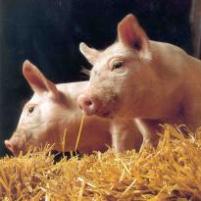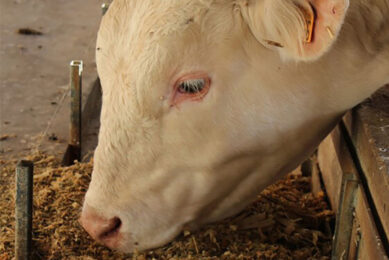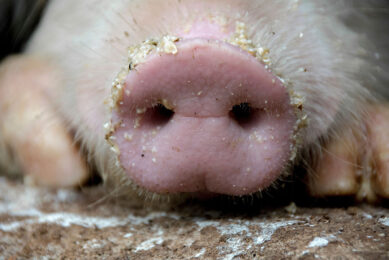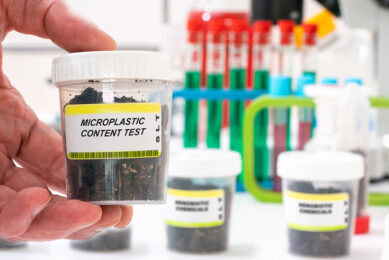Effect feed on bacterial intestinal diseases

The animal sciences group in the Netherlands has published a new report: The effect of feed composition on bacterial intestinal diseases in pigs.
The report is a literature study to gain more insights in the
role of feed in pig enteric bacterial diseases dysentery (Brachyspira
hyodysenteriae), colitis (Brachyspira pilosicoli), ileitis (Lawsonia
intracellularis) and salmonellosis (Salmonella
typhimurium).
NSP fraction
Controlling enteric bacterial
diseases can be done by controlling the carbohydrate fraction in the diet.
This fraction contains mono-, di- and oligosaccharides and two polysaccharides,
starch and non-starch polysaccharides (NSP). Australian research shows a
reduction in the development of dysentery by diets with a low amount of soluble
NSP and a low amount of RS (resident starch) limiting fermentation in the large
intestine, for example high digestible diets based on animal proteins and cooked
white rice. However, this has not been confirmed by European and Canadian
researchers.
High digestible diets
Danish work shows a
reduction of dysentery by (fermented) feeds, with or without soybean, lowering
the large intestinal pH. Also a non-carbohydrate, conjugated linoleic acid, may
reduce the development of dysentery. As for dysentery, Australian research shows
a reduction in the development of colitis by feeding diets with a low amount of
soluble NSP and a low amount of RS. In contrast with the state of art on
dysentery, Danish research confirms a reduction of the development of colitis by
feeding high digestible diets based on animal proteins and cooked white rice.
Effect of pelleting
Non- pelleted feed may contribute in the
reduction of the development of colitis. Ileitis may be reduced by fermenting a
standard feed. Non-pelleted feed and a low amount of NSP in the feed may
contribute in the reduction of the development of ileitis. The risk of
sub-clinical Salmonella infections is reduced when a coarsely in stead of a
finely ground feed is used or a non-pelleted in stead of a pelleted feed is
used. Also liquid feeding reduces the risk of sub-clinical Salmonella
infections.
Australian research shows that feeding high digestible diets
based on animal proteins and cooked white rice reduces Salmonella infections.
Feed, and especially carbohydrate composition, may affect the development of
enteric bacterial diseases. Also the kind of feed ingredients (soybean or not)
may be an issue, as shown by the effect of an organic feed with typical
non-conventional ingredients on the development of dysentery. Besides feed
composition, also feed treatment (milling size, pelletizing, fermentation) is
important. A more coarse grinding, no pelletizing and fermentation may be
preferable.
Related articles:
–Combine feed composition with AGP
alternatives
–The betterfeed concept- a total solution for pig performance and
health
–The importance of microflora management
Related
website:
Animal Sciences
Group
Join 26,000+ subscribers
Subscribe to our newsletter to stay updated about all the need-to-know content in the feed sector, three times a week. Beheer
Beheer









 WP Admin
WP Admin  Bewerk bericht
Bewerk bericht